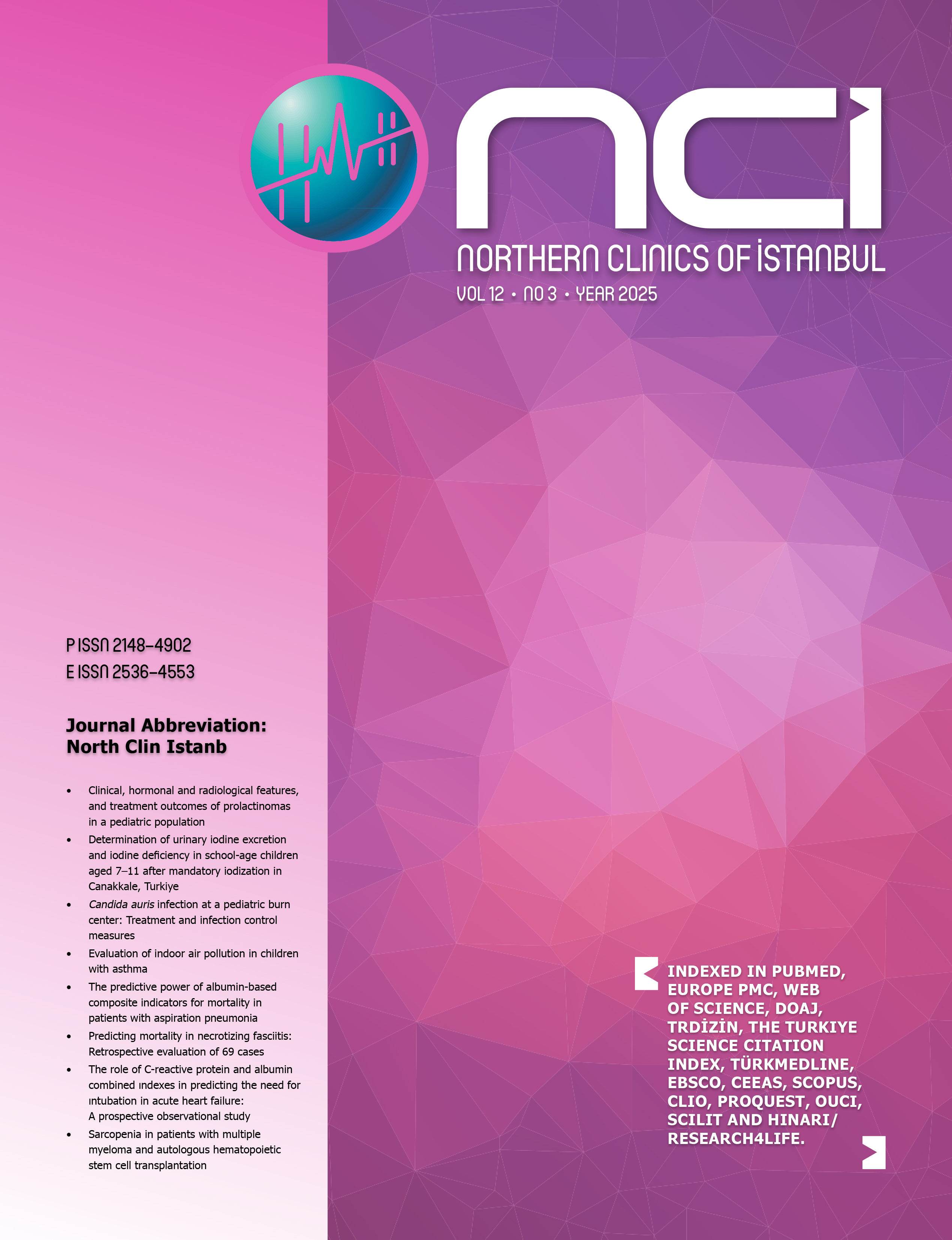The relationship between joint hypermobility and subacromial impingement syndrome and adhesive capsulitis of the shoulder
Arzu Atici, İlknur Aktas, Pinar Akpinar, Feyza Unlu OzkanDepartment of Physical Medicine and Rehabilitation, Universıty of Health Sciences, Fatih Sultan Mehmet Training and Research Hospital, Istanbul, TurkeyINTRODUCTION: Joint hypermobility (JH) is a clinical condition in which the joints move beyond the expected physiological range of motion. JH can be accompanied by many musculoskeletal complaints. One of the common causes of musculoskeletal pain is shoulder pain. The aim of this study was to investigate the relationship between subacromial impingement syndrome (SAIS), shoulder adhesive capsulitis (AC), and JH in patients with shoulder pain.
METHODS: Patients aged between 18 and 70 years who presented at the physical medicine and rehabilitation outpatient clinic and who were diagnosed with SAIS or AC in a clinical and physical examination were included in the study. Patients in the same age group without musculoskeletal system pain were included in a control group. All of the cases were assessed for hypermobility using the Beighton score for generalized joint hypermobility (GJH), and the revised 1998 Brighton criteria for benign joint hypermobility syndrome (BJHS).
RESULTS: Of the 124 cases included in the study, 71 (57.3%) were female and 53 (42.7%) were male. There was no case of GJH in the AC group. There were 2 (4.50%) cases in the SAIS group and 3 (7.5%) in the control group. BJHS was found in 4 (10%) cases in the AC group, 6 (13.63%) in the SAIS group, and 2 (5%) cases in the control group. There was no statistically significant difference between groups in terms of JH (p>0.05). The Beighton scores of the AC group were statistically lower those of the control group (p<0.05).
DISCUSSION AND CONCLUSION: The results of this study indicated no significant difference between the SAIS group, the AC group, and the control group in terms of GJH and BJHS. The fact that Beighton scores were lower in the AC group than in the control group suggests that the probability of developing AC in those with JH may be lower.
Eklem hipermobilitesi ile subakromial sıkışma sendromu ve omuzun adeziv kapsüliti arasındaki ilişki
Arzu Atici, İlknur Aktas, Pinar Akpinar, Feyza Unlu OzkanSağlık Bilimleri Üniversitesi, Fatih Sultan Mehmet Eğitim Ve Araştırma Hastanesi, Fiziksel Tıp Ve Rehabilitasyon Kliniği, İstanbulGİRİŞ ve AMAÇ: Eklem hipermobilitesi (EH), eklemlerin fizyolojik hareket sınırlarının üzerinde hareket genişliğine sahip olmasıyla karakterize klinik bir durumdur. EH birçok kas iskelet sistemi yakınmaları ile birlikte olabilmektedir. Toplumda yaygın görülen kas-iskelet sistemi ağrısı nedenlerinden biri omuz ağrısıdır. Çalışmamızda farklı patofizyolojik mekanizmalarla omuz ağrısı etkeni olan subakromial sıkışma sendromu (SSS) ve omuzun adeziv kapsülitinin (AK) eklem hipermobilitesi ile ilişkisini incelemeyi amaçladık.
YÖNTEM ve GEREÇLER: Çalışmaya fiziksel tıp ve rehabilitasyon polikliniğimize başvuran, klinik ve muayene ile SSS ve AK tanısı konulan 18-70 yaş arasındaki olgular dahil edildi. Kontrol grubu olarak aynı yaş grubundaki kas ve iskelet sistemi ağrısı olmayan olgular alındı. Tüm olgular hipermobilite açısından generalize eklem hipermobilitesi (GEH) için Beighton skoru, benign eklem hipermobilite sendromu (BEHS) için ise revize 1998 Brighton kriterleri ile değerlendirildi.
BULGULAR: Çalışmamıza dahil olan 124 olgunun 71i (%57.3) kadın, 53ü (%42.7) erkek idi. AK grubunda GEH olan olgu yoktu. SSS grubunda 2 (%4,50) olguda, kontrol grubunda 3 (%7.5) olguda GEH vardı. AK grubunda 4 (%10), SSS grubunda 6 (%13.63), kontrol grubunda ise 2 (%5) olguda BEHS saptandı. Gruplar arasında hipermobilite varlığı açısından istatistiksel olarak anlamlı fark saptanmadı (p>0.05). Beighton skorları açısından karşılaştırdığımızda AK grubunun Beighton skorları, kontrol grubuna kıyasla istatistiksel olarak anlamlı düzeyde düşük bulundu (p<0.05).
TARTIŞMA ve SONUÇ: Çalışmamız SSS, AK ve kontrol grupları arasında GEH ve BEHS açısından farklılık olmadığını göstermektedir. AK grubunda Beighton skorlarının kontrol grubuna göre daha düşük bulunması, eklem hipermobilitesi olanlarda AK gelişme ihtimalinin daha düşük olabileceğini düşündürmektedir.
Manuscript Language: Turkish





















